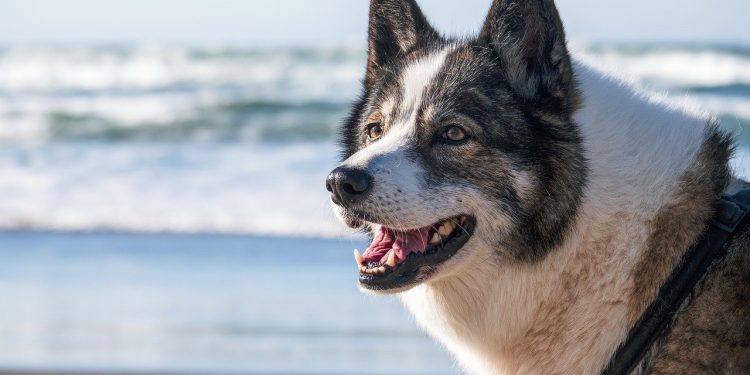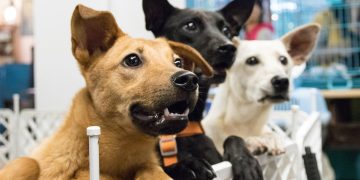Active pets, whether they are high-energy dogs, playful cats, or even lively small animals, have unique dietary needs to match their energetic lifestyles. Proper feeding schedules not only ensure that these pets get the nutrients they need but also help maintain their energy levels, support muscle health, and prevent digestive issues. This guide outlines how to create effective feeding schedules for active pets, considering their species, age, and activity levels.
Why Feeding Schedules Matter
Consistent Energy Levels
A well-planned feeding schedule helps maintain steady energy throughout the day, preventing fatigue or hyperactivity.
Digestive Health
Feeding at regular intervals supports better digestion and reduces the risk of bloating, particularly in active dogs.
Weight Management
Scheduled feeding prevents overeating, which can lead to obesity or other health problems.
Factors to Consider When Planning a Feeding Schedule
Species
- Dogs: Require frequent meals, especially puppies or highly active breeds.
- Cats: Thrive on smaller, more frequent meals throughout the day.
- Small Animals: Rabbits, guinea pigs, and other small pets often need constant access to hay or specific foods to support their metabolism.
Age
- Puppies and Kittens: Require more frequent meals due to their rapid growth.
- Adults: Can often transition to two or three meals per day.
- Seniors: May benefit from smaller, more frequent meals to support digestion and energy.
Activity Level
- Highly active pets need higher calorie intake spread over several meals.
- Pets involved in intense physical activities, such as agility training or long walks, may require tailored feeding schedules.
Feeding Schedules for Dogs
Puppies
- Frequency: 3–4 meals per day.
- Timing: Morning, midday, and evening.
- Portion Size: Adjust based on breed size and growth requirements.
Adult Dogs
- Frequency: 2–3 meals per day.
- Timing:
- Morning: Start the day with a high-energy meal.
- Afternoon: Optional smaller meal for active breeds.
- Evening: A balanced meal to replenish energy.
Working or Highly Active Dogs
- Pre-Exercise Meal:
- Offer a light meal 2–3 hours before intense activity.
- Avoid feeding immediately before exercise to reduce the risk of bloat.
- Post-Exercise Meal:
- Feed within 30 minutes to an hour after activity to aid recovery.
Feeding Schedules for Cats
Kittens
- Frequency: 4–5 small meals per day.
- Timing: Spaced evenly, including a meal before bedtime.
- Portion Size: Based on weight and energy needs.
Adult Cats
- Frequency: 2–4 small meals per day.
- Timing:
- Morning: A meal to kickstart their day.
- Afternoon: Optional light meal for active cats.
- Evening: Main meal before nighttime activity.
Active Indoor Cats
- Use puzzle feeders or timed feeders to encourage natural hunting behavior.
- Spread meals throughout the day to mimic frequent hunting and eating.
Feeding Schedules for Small Animals
Rabbits
- Primary Food: Unlimited access to fresh hay (e.g., timothy or orchard grass).
- Additional Meals:
- Morning: A handful of fresh leafy greens.
- Evening: Pellets in limited quantities.
Guinea Pigs
- Primary Food: Constant access to hay.
- Additional Meals:
- Morning and evening: Fresh vegetables like bell peppers and cucumbers.
- Daily: Small portions of vitamin C-enriched pellets.
Hamsters
- Frequency: 1–2 meals per day.
- Timing: Evening feeding aligns with their nocturnal activity.
- Food Types: Seed mixes and occasional fresh produce.
Tips for Optimizing Feeding Schedules
Monitor Portion Sizes
- Adjust portions based on your pet’s age, weight, and activity level.
- Use measuring cups or scales to ensure consistency.
Include Hydration
- Active pets need constant access to clean, fresh water.
- For dogs or cats, consider adding wet food to their diet for additional hydration.
Use Enrichment Tools
- Puzzle feeders and slow-feed bowls can make mealtime more engaging and prevent overeating.
- For cats and small animals, hiding food in different locations encourages natural foraging behavior.
Special Considerations for Active Pets
High-Performance Pets
- Working dogs or cats involved in activities like agility, herding, or hunting require diets higher in protein and fat.
- Feed smaller, more frequent meals to sustain their energy needs.
Pets in Hot Climates
- Adjust meal times to cooler parts of the day to encourage eating.
- Provide electrolyte-enhanced water during extreme heat.
Recovery Days
- Reduce portion sizes slightly on rest days to avoid weight gain.
Avoiding Common Feeding Mistakes
Feeding Immediately Before Exercise
- Can lead to bloating or digestive issues, particularly in dogs.
Overfeeding Treats
- Treats should account for no more than 10% of your pet’s daily caloric intake.
Ignoring Food Labels
- Always check the feeding guidelines provided on pet food packaging.
Monitoring Your Pet’s Health
Regular Weight Checks
- Weigh your pet monthly to ensure they maintain a healthy weight.
Observe Energy Levels
- Adjust feeding schedules if your pet seems lethargic or overly hungry between meals.
Veterinary Consultations
- Schedule regular checkups to discuss your pet’s dietary needs, especially if their activity levels change.
Sample Feeding Schedule for an Active Dog
- 7:00 AM: Morning meal with high-quality kibble and a small portion of wet food.
- 12:00 PM: Light snack or treat (optional for highly active breeds).
- 6:00 PM: Evening meal with balanced nutrients.
Sample Feeding Schedule for an Active Cat
- 7:00 AM: Small meal with wet food.
- 12:00 PM: Light snack or dry kibble.
- 6:00 PM: Main meal with a mix of wet and dry food.
- 10:00 PM: Final small meal or treat before bedtime.
Creating a feeding schedule tailored to your active pet’s needs can significantly improve their health and quality of life. By considering their unique requirements and monitoring their progress, you can ensure they remain energetic, happy, and well-nourished.












